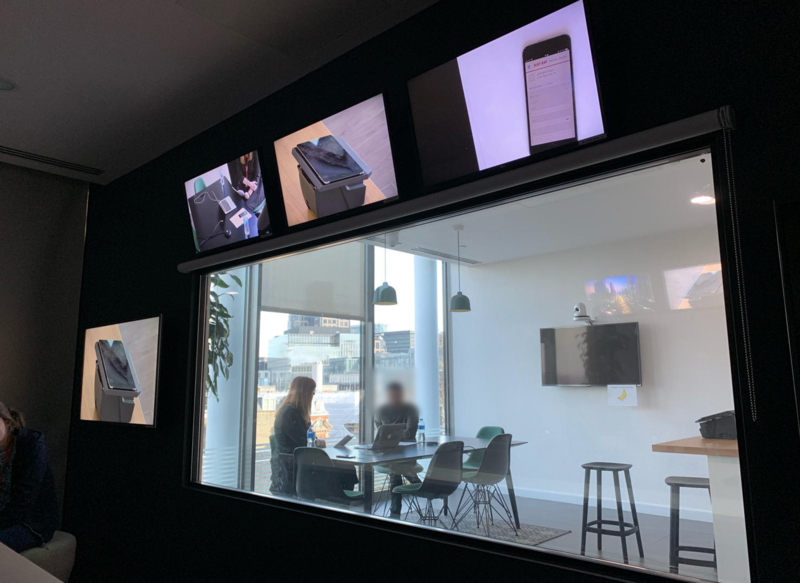I started out in the UX industry working for a consultancy. This was the perfect place for me to build my skills, experience and confidence by working on different client projects. Given I was used to starting new projects that often required me to be at client site, when I accepted a new role I felt well equipped. But the reality is that starting somewhere in house is wildly different from starting a new client project. As will be the case with any large company, there’s a lot to learn in terms of domain and ways of working. Throughout an initial period of discomfort, self-doubt and imposter syndrome, I was sure that it would be 100% worth it. Surrounded by a helpful and supportive team, getting stuck in to running design sprints was the key to feeling comfortable and content. As I approach 3 months at Just Eat, I wanted to put in writing all the revelations I’ve had since being here…
Teamwork is pretty darn cool
I feel like I now fully understand what teamwork and collaboration looks like. When you’re in house, you work with the same people with the same common goal day in, day out. Each member of the team has a valuable part to play in a project. It’s so rewarding to work effectively with the team and see that work come to life, and to know that you achieved that together.
One of the most important parts of teamwork is sharing knowledge. I came into a more experienced team, as the most junior designer. I’ve wracked up a huge amount of new knowledge from the designers and researchers on my team. For example, I had never written a hypothesis before, and had never used google analytics. Where at a consultancy you somewhat depend on your own knowledge to bring to the client and are positioned as an SME, at Just Eat I am one part of a team that I learn from.

Having proper design processes in place makes a huge difference to the quality of the work produced
 Usability labs at Just Eat
Usability labs at Just EatWe’re lucky enough to have user researchers here (it seems strange now to think I did this myself before). Research is a huge discipline, so having that resource and capacity dedicated to thorough research is incredibly important. Every 2 weeks here, our restaurant partners come into the usability lab for research. Research and design led thinking is prioritised and celebrated. We’re trusted to make our own design decisions, and given the agency to carry this out. Want to go to the call centre to get more insight into a problem? Go ahead. Want to go out to the field to understand how this product is being used in context? It’s encouraged.
Today, ‘design thinking’ can be used as a bit of a buzz-word — there’s a lot of talk, writing, and a lot of workshops. But when it comes down to it, often user-centred design isn’t prioritised, particularly in a consultancy project based environment where budgets and timelines are tight, and clients are often unaware of the benefits. Acting as an advocate for user-centred design can become wearing, especially when you’re up against the odds. Working for a company that leads with a user centred design mindset which is entrenched in processes is really refreshing, and, at the end of the day, produces better outputs.
There’s a whole frickin’ tonne of information at your fingertips

As a new person, this has been both a blessing and a curse. In a company as big as Just Eat, there are so many different teams, so many different products, so many different projects and so many people with so much knowledge. The great thing is, when you’re faced with a new problem to tackle, you can get a huge amount of insight to this problem internally. What’s tricky is to know what to look for and where to look. There’s a wealth of information — from data, to the call centre, to people in the business (for example territory managers who go out and speak to restaurants everyday).
You get to see the fruits of your labour
It’s fascinating and rewarding to be involved in the full product lifecycle, and to be able to see what happened to that feature after you finished working on it. You can learn a lot when something is released and feedback is collected — you can understand what has gone well and what hasn’t, and build on it.
You think you know a product until you see it in context
I strongly believe since working at Just Eat that testing a product in context is essential, and this is something I’ll carry with me. It’s risky to design for something without seeing it in its natural habitat. You might miss crucial things. For example, we recently worked on a new design for how scheduled orders are received. Restaurants were able to differentiate the scheduled from the normal orders in user testing in our lab, where they were primed. However, the reality is that it’s actually pretty rare for a restaurant to receive a scheduled order. Testing in the field showed that in the context of a restaurant, particularly when busy, there is so much going on that the scheduled orders were assumed to be normal ones, and a much stronger visual cue was required to differentiate. The knock on effect of this would’ve been restaurants cooking food that was not yet required, having to throw it away and therefore losing money and wasting time.
Technology puts a distance between the customer and the vendor, particularly in the food industry
When we are the user, particularly in the takeaway industry, we’re distanced from the vendor. As a customer, we don’t realise all of the work behind the scenes and what actually happens when we interact with a product. Working at Just Eat revealed so much complexity around the takeaway industry that I had not even considered before. I hadn’t even thought about the technology that the restaurants use. We can order food from restaurants without even seeing the physical location — would we make the same choices and hold the same attitudes if we could see the physical location? It’s easy to sit there behind an app and constantly check the little map to see the rider and get increasingly annoyed, but if you could see all that was going on in this restaurant, perhaps you wouldn’t feel this way. The Just Eat insights team has bridged the gap between themselves and the customers and vendors using an internal video series. It goes from watching the customers order a takeaway at home to speaking with the restaurant where they ordered. Having this journey played out to the company creates a deeper level of empathy for the different players in the food delivery process.
Design at this level can actually make a real impact to people’s lives
All these small changes and features that we work on have a very real effect in the running of the restaurant (take the example above of scheduled orders). When speaking to restaurant managers in the field, it’s evident that they have worked so hard to grow their business from scratch, and that their lives revolve around their business. For a lot of our restaurant partners, the business is family run and passed through generations. Our restaurant partners are relentlessly hard working, passionate and ambitious. The use case for restaurants is day in, day out. Each little feature we work on culminates to enable them to better run their business and, in turn, makes a difference to their lives.
The most important thing I have learned since changing jobs, is that you can’t improve if you’re not prepared to push yourself outside your comfort zone. Sure, the comfort zone might seem…comfy…but you won’t get far if you never get out of that bean bag. Your learning should never stop, no matter how many years experience you have under your belt or what your level may be.